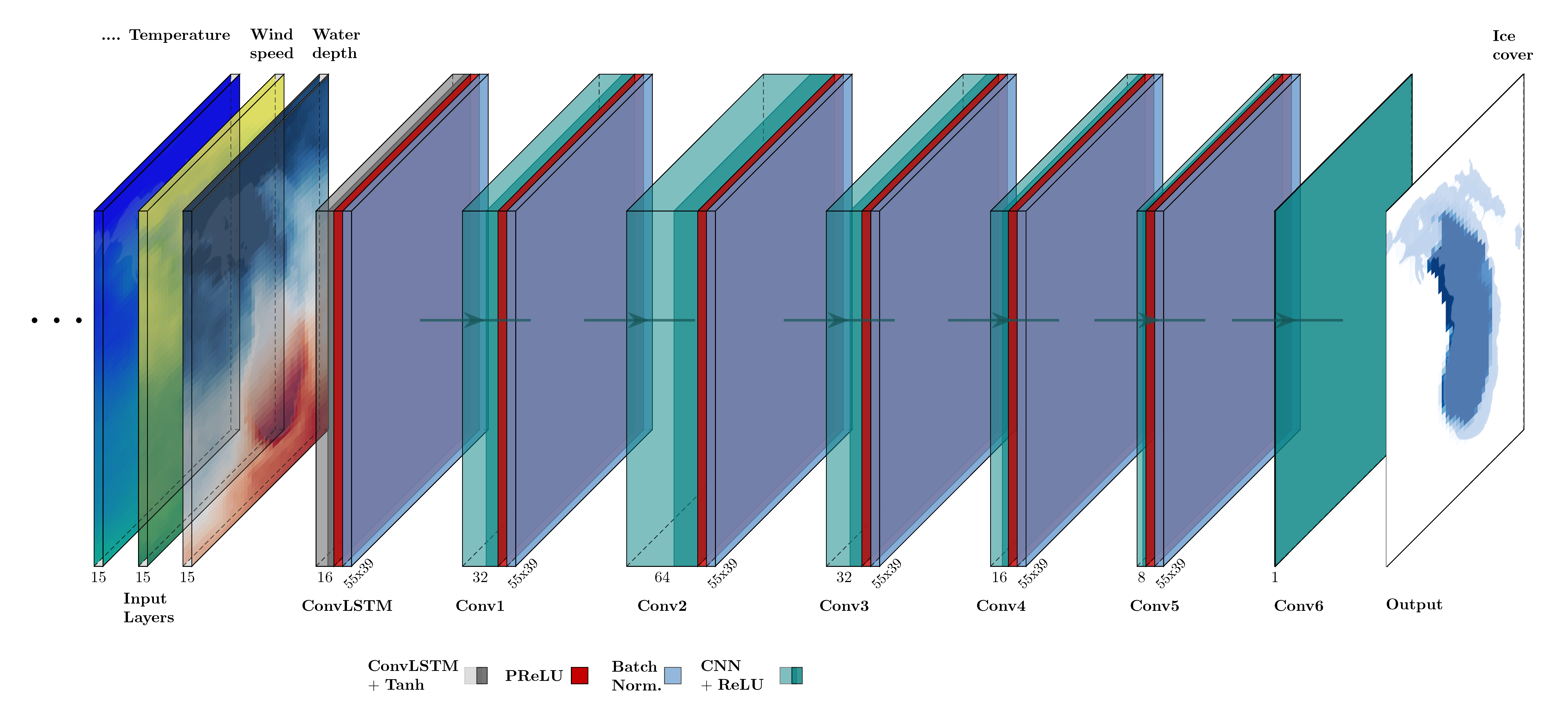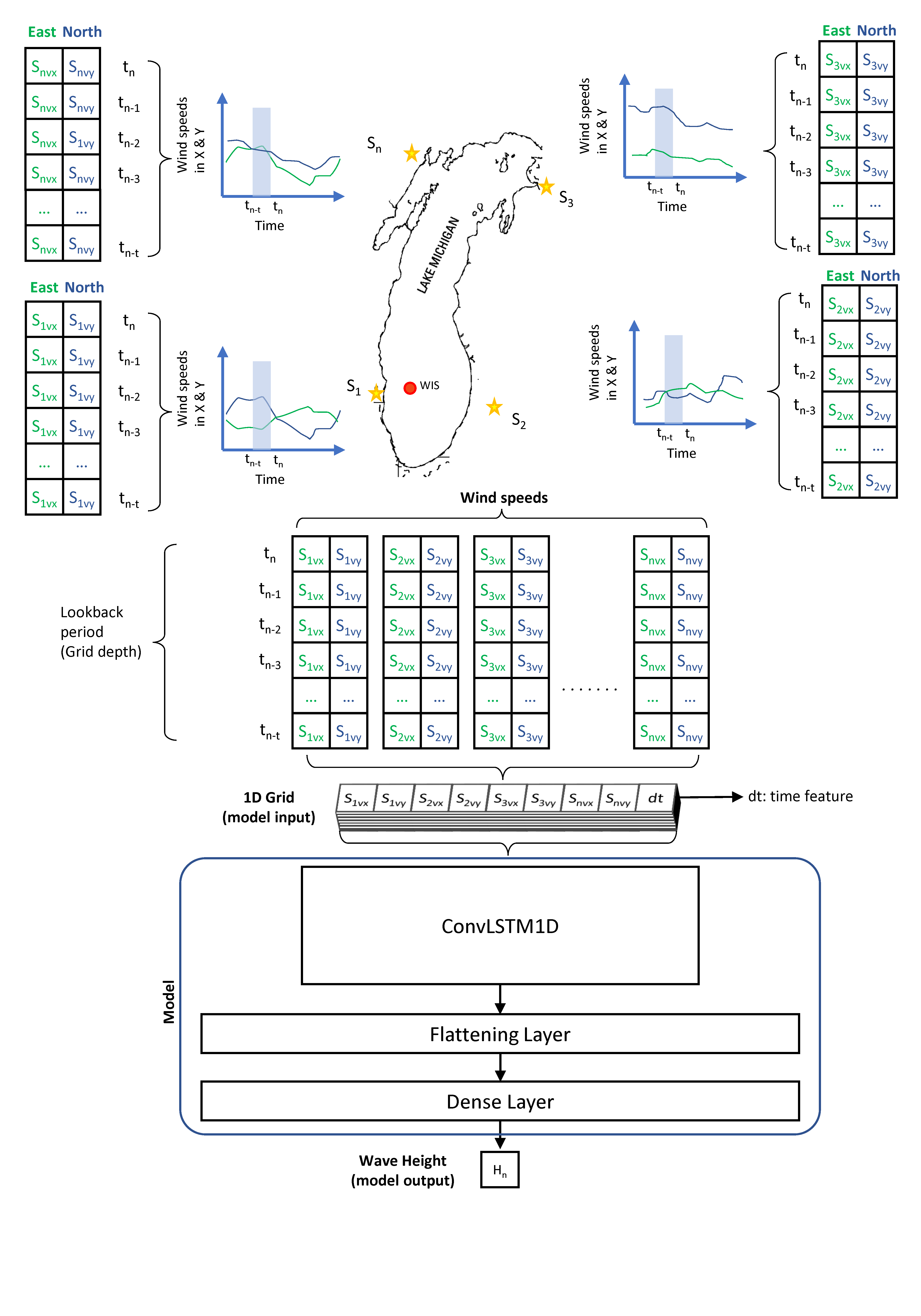Hydroclimate modeling using AI/ML
Started in 2023
This project applies advanced machine learning techniques to reconstruct and forecast hydroclimatic variables—specifically wave height and ice cover—in the Great Lakes. Due to the limited availability of long-term observational data, particularly before the satellite era, understanding the historical impact of climate variability on lake dynamics has been challenging. To overcome this, a suite of deep learning models—including Multi-Layer Perceptrons (MLP), Convolutional Neural Networks (CNN), and Recurrent Neural Networks (RNN)—was developed using historical meteorological inputs such as wind speed and air temperature (Abdelhady & Troy, 2024; Abdelhady & Troy, 2025). These models demonstrated performance on par with, and in some cases superior to, physics-based models. The resulting framework enabled the reconstruction of wave height and ice cover time series back to 1950, providing a critical foundation for assessing past climate impacts and informing future projections.

